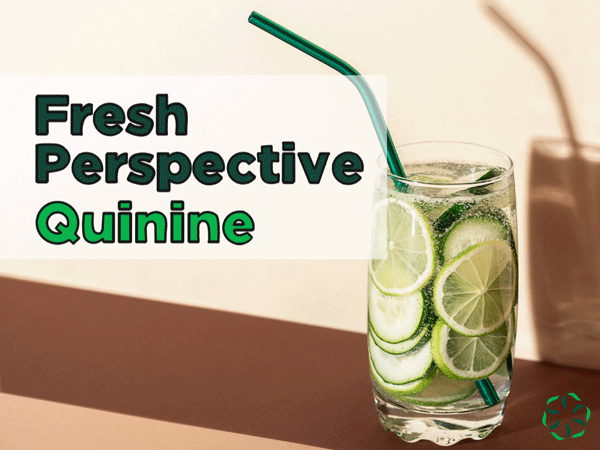As summer heats up, let’s take a look at an ingredients in some of our favorite beverages; quinine.
Updated: May 28, 2020
As warm weather season kicks off, and you reach for your favorite drink, did you know it could contain quinine?
What is quinine?
Quinine is an ingredient and medication derived from the bark of a cinchona tree native to South America. Quinine has been used for centuries in the prevention and treatment of malaria by killing the organisms that cause the disease.
This ingredient was also used in supplements and medications to help with leg and other muscle cramping issues. However, it is no longer allowed in supplements, and the U.S. FDA has strongly discouraged using quinine for this purpose due to the potential adverse health impacts.
Quinine has a rich and sordid history dating back to the 17th century. The production and control of quinine began when Jesuit priests introduced the ingredient to Europe, leading to the Spanish controlling quinine via their colonies for centuries. Eventually, British explorers smuggled cinchona seeds out of Bolivia and sold them to the Dutch. The Dutch used the seeds and grew high-quinine-yield cinchona trees in Java and then controlled the quinine market. Some historians believe the production of quinine during this time contributed to the colonization and exploration of Africa and Asia due to the ability to treat malaria. WWII stopped the Dutch monopoly of quinine, but it didn’t end the need for this ingredient.
While scientists have been able to synthesis and purify quinine for medications, much of the quinine we consume in beverages today still comes from the cinchona tree.
What products contain quinine?
Today, you can find quinine in some of your favorite beverages, most notably in tonic water.
Historically, tonic water contained very high levels of quinine and was extremely bitter, requiring sugar and, at times, gin to improve the flavor profile. Today, quinine in tonic water provides the familiar bitter flavor we’re accustomed to, without the risk of overexposure.
Is it safe to consume?
The U.S. FDA regulates the amount of quinine allowed in any beverage or food to ensure safe levels.
When taking quinine as prescription medication at therapeutic levels, there are risks of adverse side effects. You should discuss the risks with your physician.
Additionally, unscrupulous manufacturers have used quinine to cut illegal street drugs, especially opioid drugs. This can be exceedingly dangerous and can cause additional issues beyond the harm caused by illicit drug use.
Will quinine in my drinks prevent or cure malaria?
No, the amount of quinine in modern drinks is not enough to provide any protection against or treatment for malaria or any other tropical diseases. The U.S. FDA limits the amount of quinine in beverages to 83 parts per million, which is far below the level needed to treat malaria.
If you will be traveling to any malaria-prone area, it’s essential to talk with your physician and to visit a travel clinic to get the proper vaccinations and medications needed to help prevent the transfer of diseases.
Will quinine in my drinks prevent or cure COVID-19?
No, at the time of this update, no known medication prevents or cures infections related to the novel coronavirus. While some clinical trials are exploring the use of other anti-malarial pharmaceuticals, quinine is not part of those studies.
If you are ill and suspect you have COVID-19, you should follow the protocols outlined by the U.S. CDC.
Will quinine in my drinks prevent or cure muscle cramps?
No, the amount of quinine in modern drinks is not enough to prevent or cure muscle cramping. Consult with a medical physician if you are having worrisome muscle cramping.
The good news.
At the time of this update, many states and countries are easing out of quarantine measures related to the novel coronavirus outbreak. While quinine used to make drinks may not provide any protective, curative properties, it remains part of our everyday lives.

